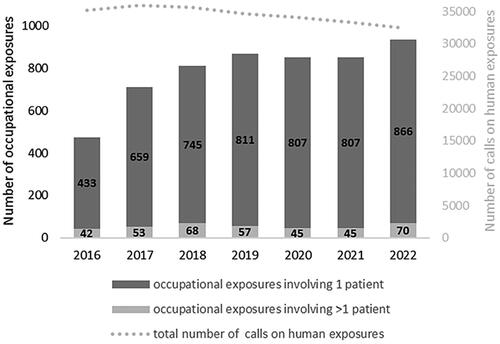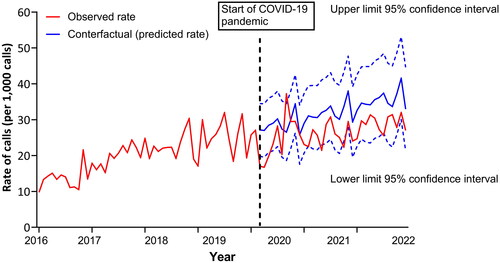Figures & data
Figure 1. Summary of the total number of calls to the Dutch Poisons Information Centre regarding human exposures (veterinary exposures excluded) and the number of calls on chronic and acute occupational exposures over the entire study period (January 2016–December 2022).

Figure 2. Number of calls to the Dutch Poisons Information Centre on human exposures and acute occupational exposures per year.

Figure 3. Rate of calls on acute occupational exposures (presented per 1,000 calls on human exposure). The red line represents the observed rate. The blue line represents the predicted rate (values predicted by the autoregressive integrated moving average model, including 95% confidence interval in dotted lines). Data are predicted from the start of the COVID-19 pandemic (March 2020).

Table 1. Most common substances involved in occupational exposures reported to the Dutch Poisons Information Centre (January 2016 December 2022).
Table 2. Symptoms reported at the time of consultation for all routes of exposure (n = 6,334 patients).
Data availability statement
The participants of the study did not give written consent for their personal data to be shared publicly, so supporting data are not available.
